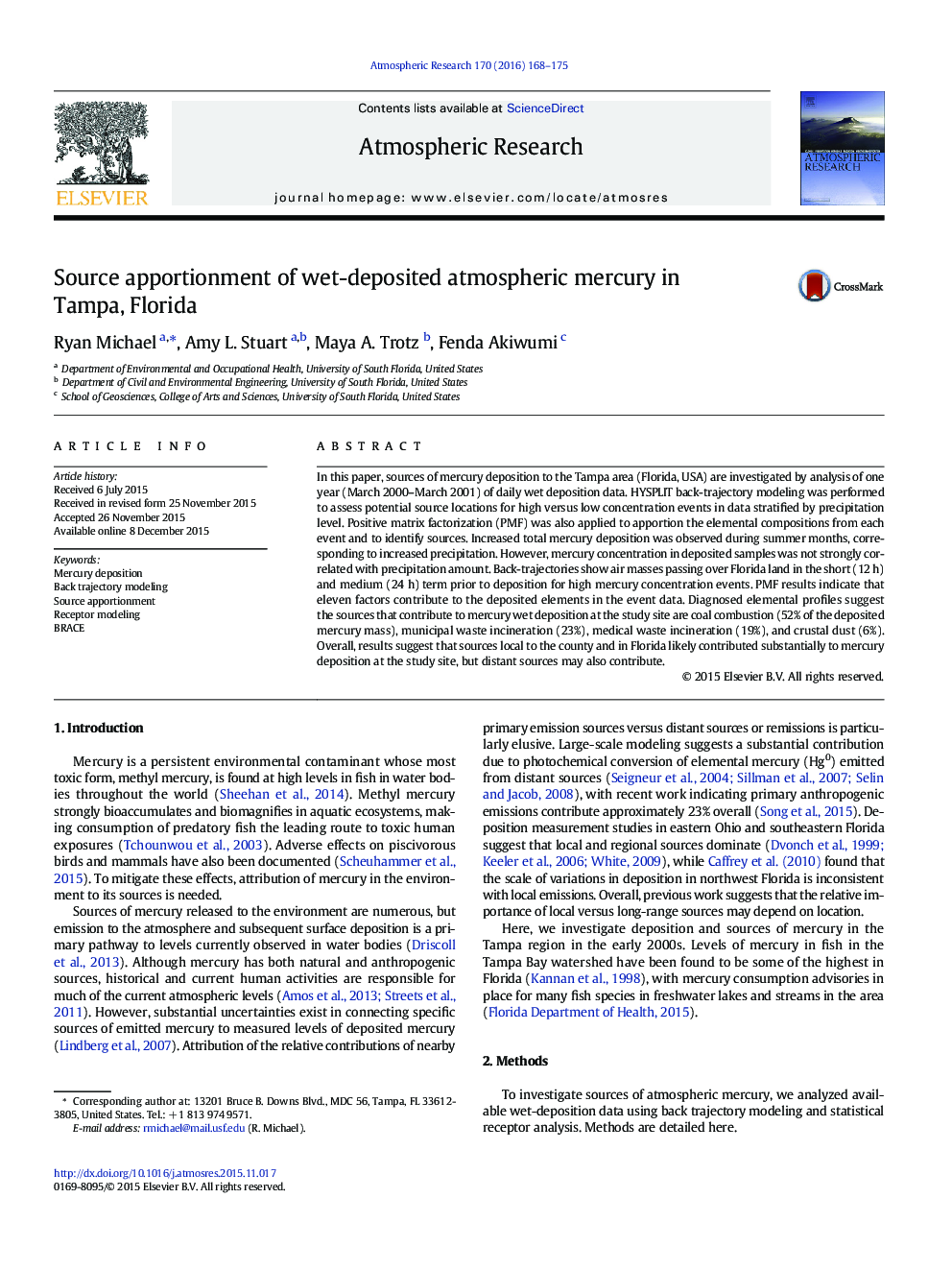| Article ID | Journal | Published Year | Pages | File Type |
|---|---|---|---|---|
| 4449592 | Atmospheric Research | 2016 | 8 Pages |
•We used multi-element wet deposition data to study mercury sources to Tampa Bay.•We performed back-trajectory modeling to elucidate source location areas.•We applied positive matrix factorization to apportion deposited species.•Sources of mercury were coal combustion, waste incineration, and crustal dust.•Back-trajectories suggest Florida sources contribute to high mercury events.
In this paper, sources of mercury deposition to the Tampa area (Florida, USA) are investigated by analysis of one year (March 2000–March 2001) of daily wet deposition data. HYSPLIT back-trajectory modeling was performed to assess potential source locations for high versus low concentration events in data stratified by precipitation level. Positive matrix factorization (PMF) was also applied to apportion the elemental compositions from each event and to identify sources. Increased total mercury deposition was observed during summer months, corresponding to increased precipitation. However, mercury concentration in deposited samples was not strongly correlated with precipitation amount. Back-trajectories show air masses passing over Florida land in the short (12 h) and medium (24 h) term prior to deposition for high mercury concentration events. PMF results indicate that eleven factors contribute to the deposited elements in the event data. Diagnosed elemental profiles suggest the sources that contribute to mercury wet deposition at the study site are coal combustion (52% of the deposited mercury mass), municipal waste incineration (23%), medical waste incineration (19%), and crustal dust (6%). Overall, results suggest that sources local to the county and in Florida likely contributed substantially to mercury deposition at the study site, but distant sources may also contribute.
